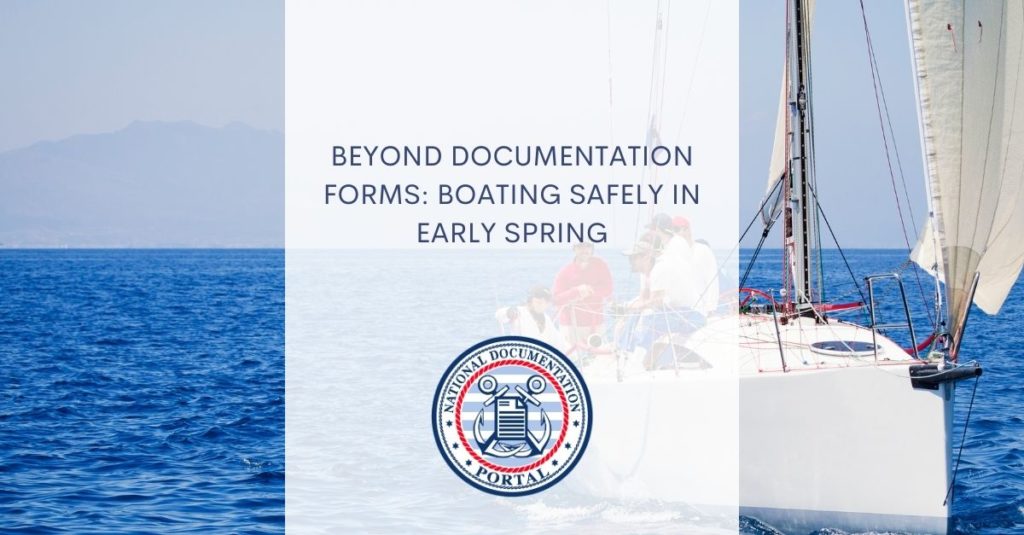As the snow thaws and the temperatures begin to rise, have you been thinking about getting your boat out of storage? Or, like many, have you been taking your boat out all year long? Here at the National Documentation Portal, we offer access to documentation forms for vessel owners from all walks of life. No matter where or why you’re boating, safety is always paramount. Below are some safety tips to keep in mind as the winter turns to spring.
At our platform, we strive to provide more than just a repository for USCG forms. While facilitating access to essential documents is crucial, we believe in going the extra nautical mile by offering valuable boating tips for a safer, better maritime experience.
Basic Boating Wisdom: Beyond Forms and Guidelines
Sure, you know the drill – wear a personal flotation device, ensure everyone on board has a properly fitting one, and always have a boating plan in place. That said, it’s not enough to just have a personal flotation device for everyone on board. Indeed, you need to have one for everyone on board that fits them. Moreover, the personal flotation device has to fit them for how they’re dressed right now.
For example, during this time of year, the temperatures may fluctuate wildly. It could be chilly when you depart and then warm out on the water or vice versa. As such, it makes sense to wear layers: that way, you can take them off and put them back on as temps shift. So, you want to have a personal flotation device for everyone that fits even when someone is wearing all of their layers.

Navigating the Heat: When the Temperature Becomes a Challenge
Imagine this: a day of boating under the blazing sun, with laughter carrying over the waves. Suddenly, you sense the heat encroaching a bit too aggressively. Whether due to prolonged sun exposure or physical exertion, it’s vital to discern when the heat surpasses mere inconvenience. While seeking shade, hydrating, and unwinding can alleviate minor discomfort, there are occasions when the situation escalates.
As the sun intensifies, it’s vital to go beyond the basics and be prepared for the challenges that extreme heat can bring to your boating escapades. Just as you prepare for unexpected thunderstorms, it’s equally essential to be vigilant when the mercury rises unexpectedly. Look out for signs of heat exhaustion – weakness, muscle cramps, headaches, and clammy, pale skin. Don’t dismiss nausea as mere overindulgence; it could be a symptom of heat exhaustion.
According to the National Weather Service, extreme heat events are responsible for an average of 702 heat-related deaths in the United States each year. Stay safe on the water by recognizing the signs of heat-related illnesses and taking necessary precautions.
Taking Action: What to Do When the Heat Takes Its Toll
If someone on your boat is showing signs of heat exhaustion, what should you do next? Start by moving them out of the sun and into the shade. Gently fan them, keep them cool, but avoid excessive cooling. If possible, head towards land so they can rest properly.
To ensure your boat remains a comfortable retreat, consider splashing water on the deck and wearing a hat to shield yourself from the sun. Keep ice packs handy, and for an extra cooling touch, store your sunscreen in the fridge or cooler.
A Hub for Documentation Forms
Amidst the joys and challenges of boating, it’s essential to stay in compliance with maritime laws. Our platform offers a comprehensive collection of USCG forms, ensuring you have everything you need for a smooth sailing experience. From initial vessel documentation to renewal, the forms you need to change your address, and so much more, we’ve got you covered.
Stay cool, stay compliant, and may your maritime journeys be filled with smooth seas and sunny skies.

